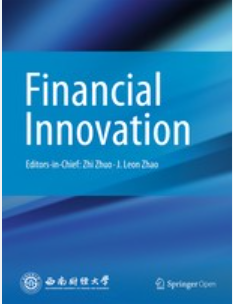基于计量经济学和机器学习的天然气已实现波动性混合模型
IF 7.2
1区 经济学
Q1 BUSINESS, FINANCE
引用次数: 0
摘要
确定哪些变量会影响价格的已实现波动率一直是一项挑战。本文建议通过制定最佳日预测来解释金融资产如何影响已实现波动率。该方法论建议基于使用最佳计量经济学和机器学习模型来预测已实现波动率。其中,异质自回归模型和长期短期记忆模型的最佳预测被用于确定标准普尔 500 指数、欧元兑美元汇率、黄金价格和布伦特原油价格对天然气已实现波动率的影响。在 87.4% 的分析日中,这些金融资产影响了天然气的已实现波动率;欧元兑美元汇率是主要的金融资产,解释了 40.1% 的影响。建议的每日分析结果与研究整个时期的方法不同。研究整个时期的传统模型无法确定时间效应,而建议的方法则可以。建议的方法使我们能够区分每天、每周或每月的影响,而不是整个时期的平均值,并能灵活地分析不同的频率和时期。这种方法能力是分析影响因素和对已实现波动率做出决策的关键。本文章由计算机程序翻译,如有差异,请以英文原文为准。
A hybrid econometrics and machine learning based modeling of realized volatility of natural gas
Determining which variables affect price realized volatility has always been challenging. This paper proposes to explain how financial assets influence realized volatility by developing an optimal day-to-day forecast. The methodological proposal is based on using the best econometric and machine learning models to forecast realized volatility. In particular, the best forecasting from heterogeneous autoregressive and long short-term memory models are used to determine the influence of the Standard and Poor’s 500 index, euro–US dollar exchange rate, price of gold, and price of Brent crude oil on the realized volatility of natural gas. These financial assets influenced the realized volatility of natural gas in 87.4% of the days analyzed; the euro–US dollar exchange rate was the primary financial asset and explained 40.1% of the influence. The results of the proposed daily analysis differed from those of the methodology used to study the entire period. The traditional model, which studies the entire period, cannot determine temporal effects, whereas the proposed methodology can. The proposed methodology allows us to distinguish the effects for each day, week, or month rather than averages for entire periods, with the flexibility to analyze different frequencies and periods. This methodological capability is key to analyzing influences and making decisions about realized volatility.
求助全文
通过发布文献求助,成功后即可免费获取论文全文。
去求助
来源期刊

Financial Innovation
Economics, Econometrics and Finance-Finance
CiteScore
11.40
自引率
11.90%
发文量
95
审稿时长
5 weeks
期刊介绍:
Financial Innovation (FIN), a Springer OA journal sponsored by Southwestern University of Finance and Economics, serves as a global academic platform for sharing research findings in all aspects of financial innovation during the electronic business era. It facilitates interactions among researchers, policymakers, and practitioners, focusing on new financial instruments, technologies, markets, and institutions. Emphasizing emerging financial products enabled by disruptive technologies, FIN publishes high-quality academic and practical papers. The journal is peer-reviewed, indexed in SSCI, Scopus, Google Scholar, CNKI, CQVIP, and more.
 求助内容:
求助内容: 应助结果提醒方式:
应助结果提醒方式:


